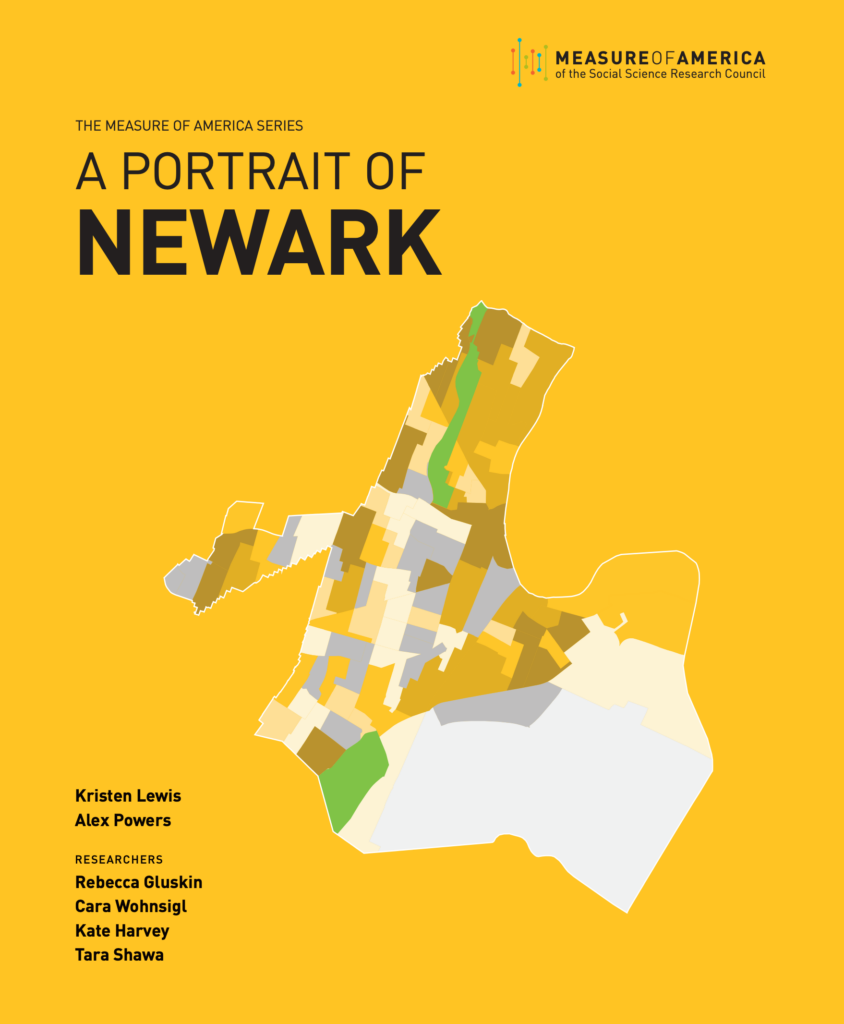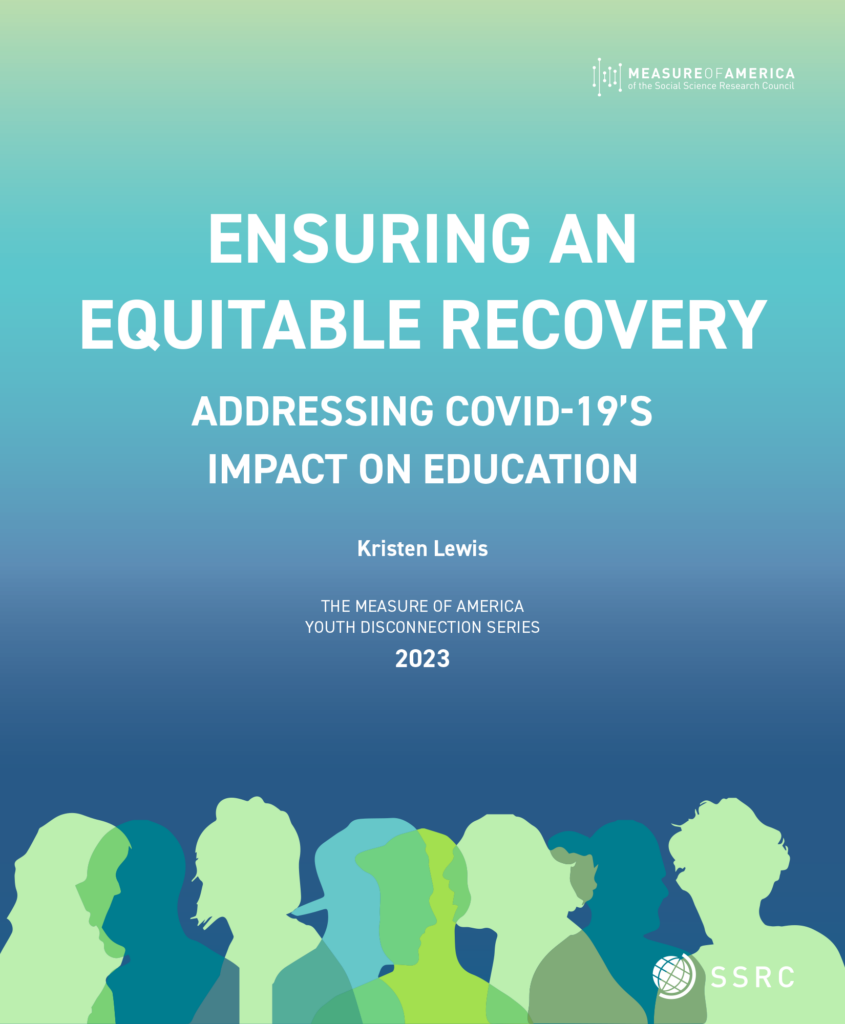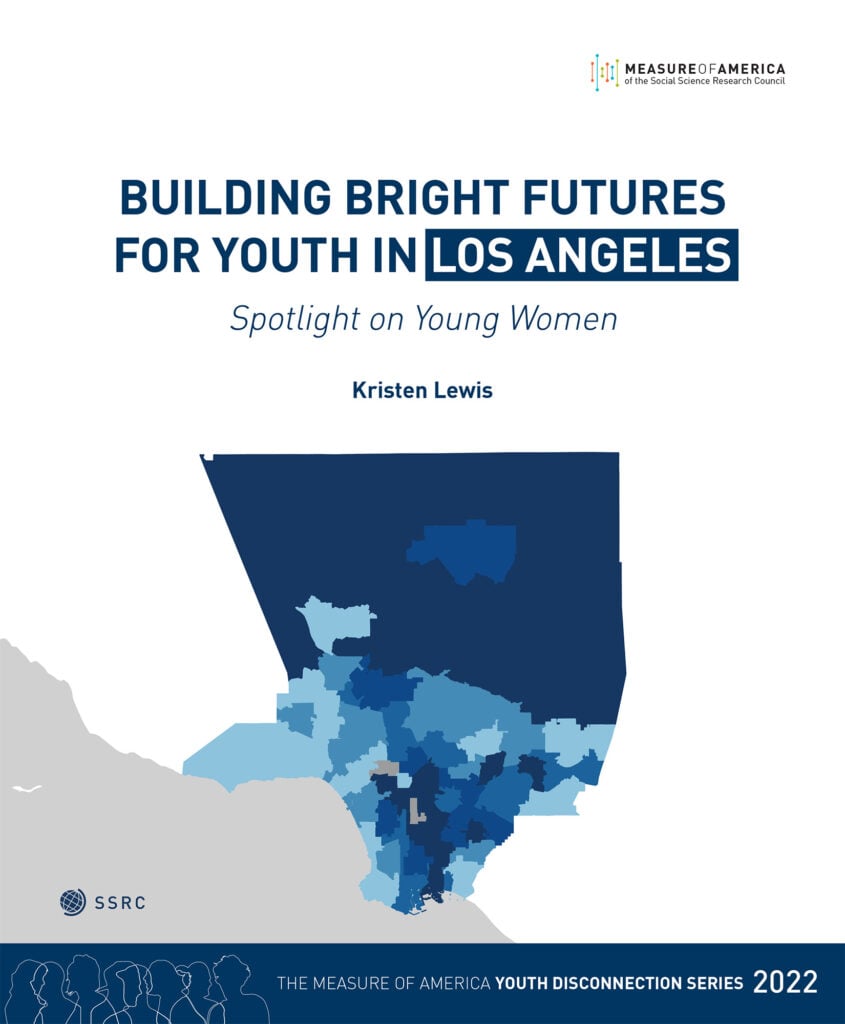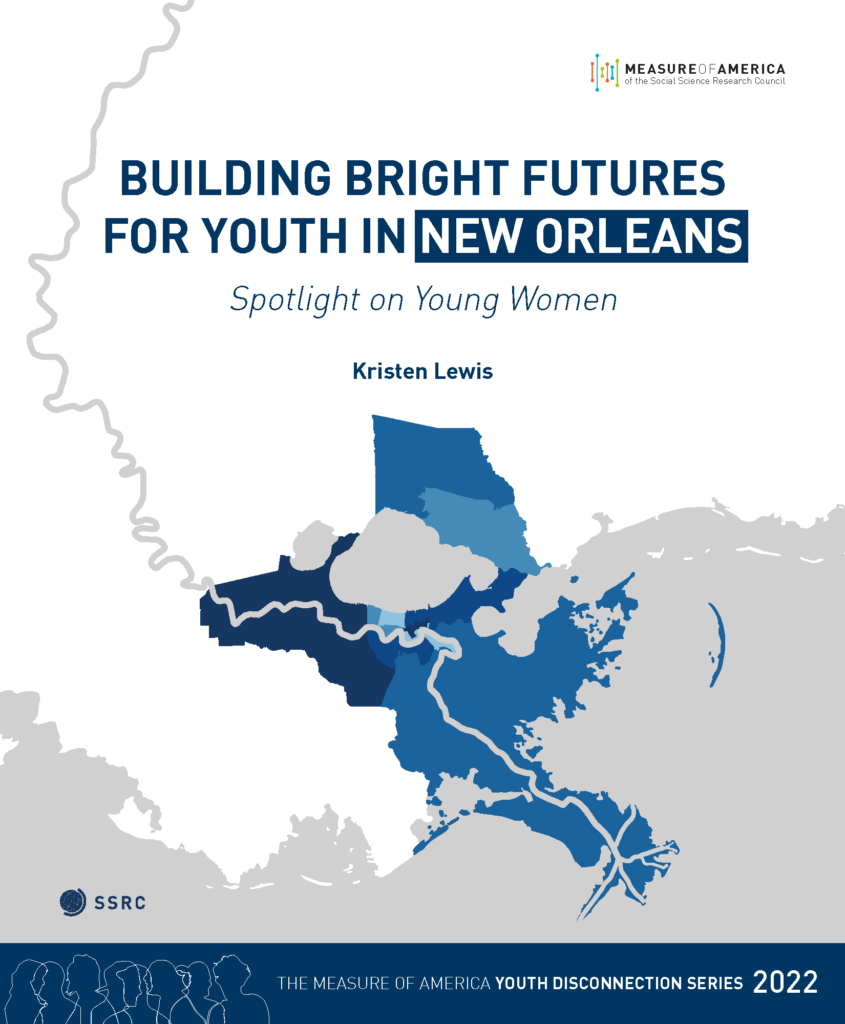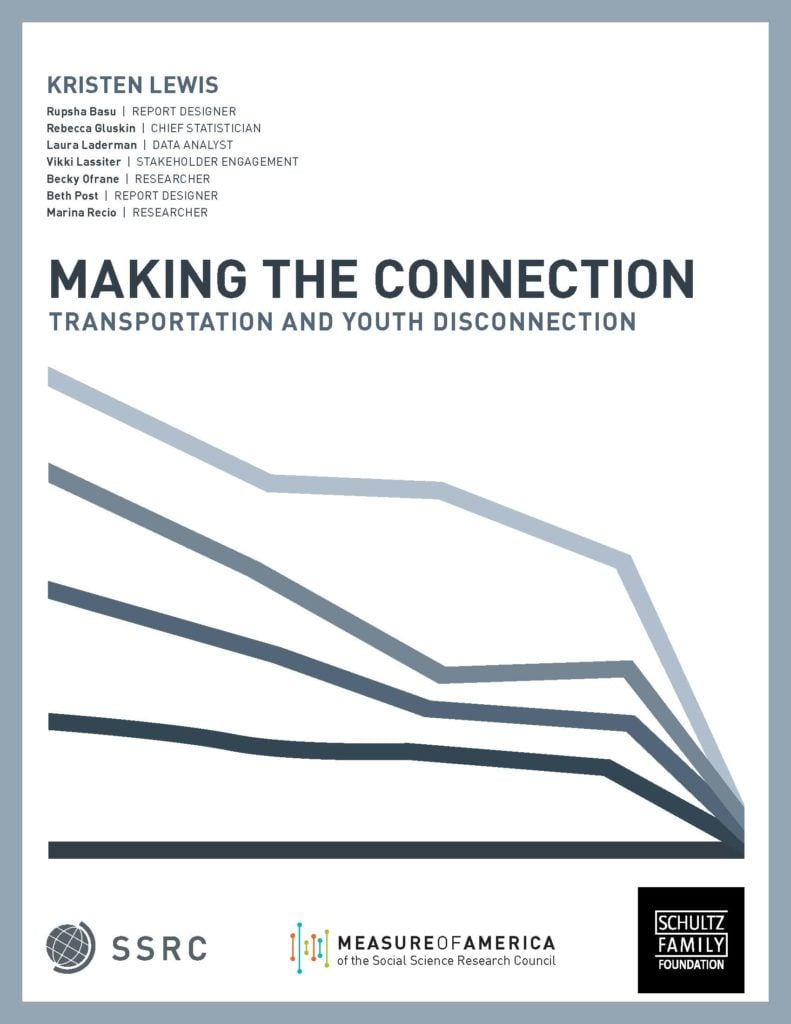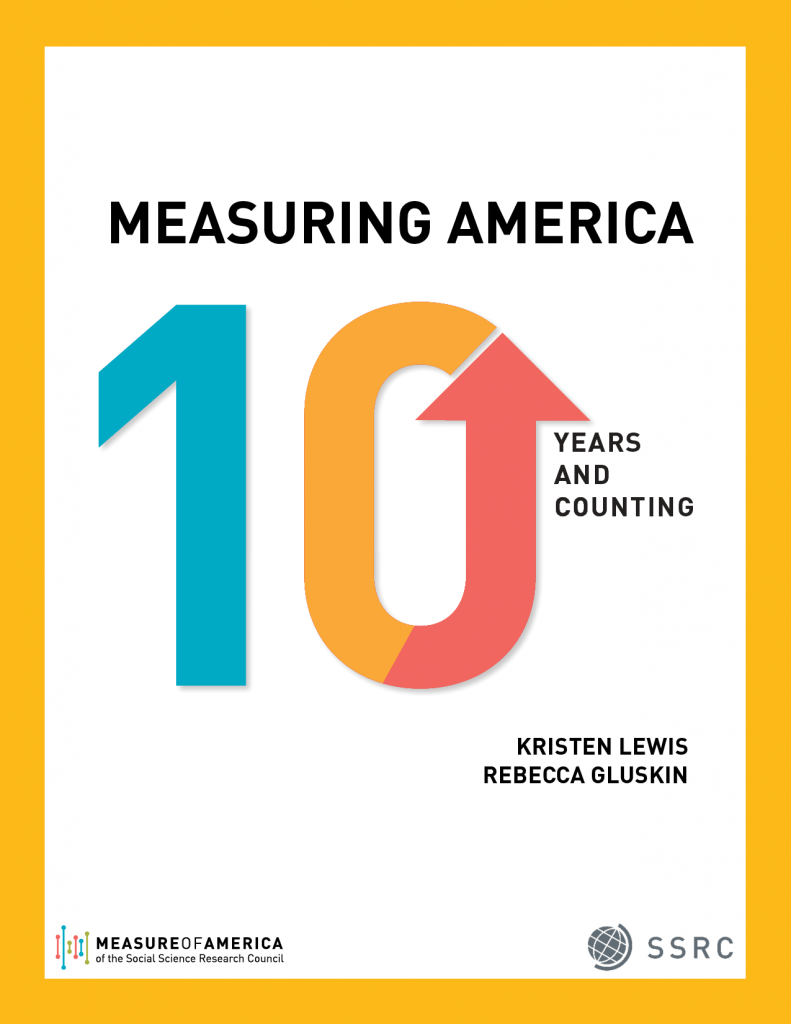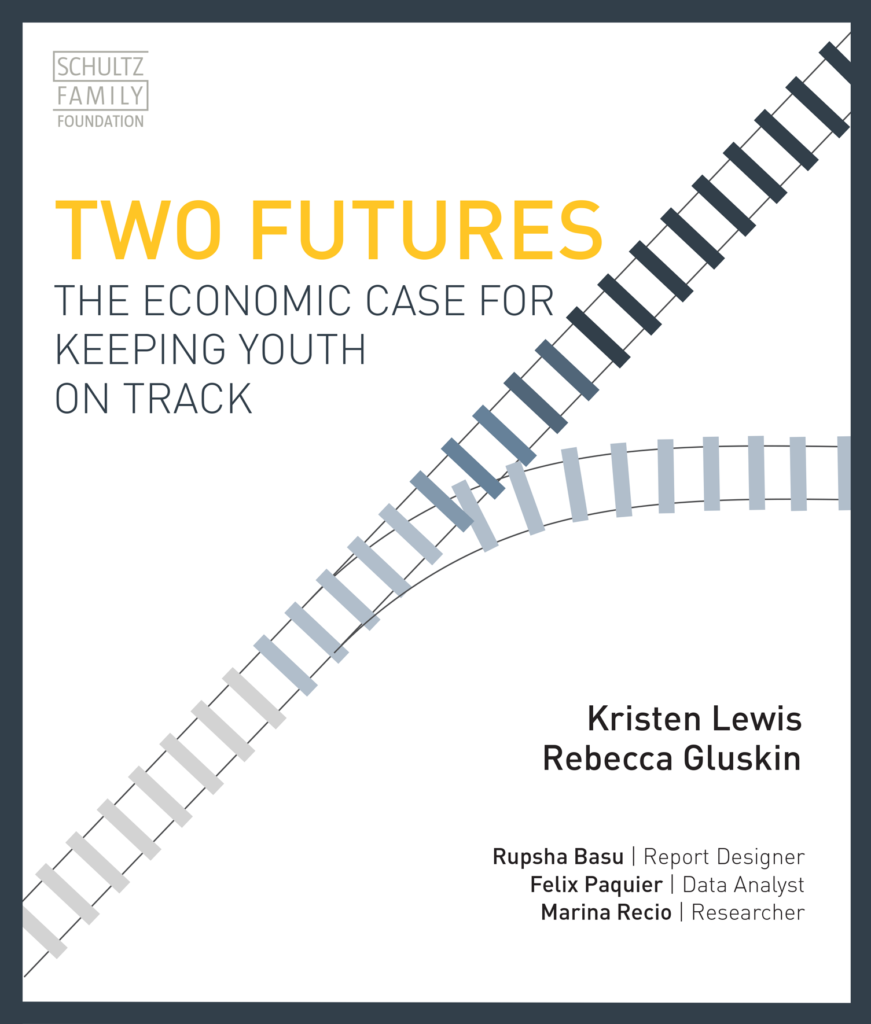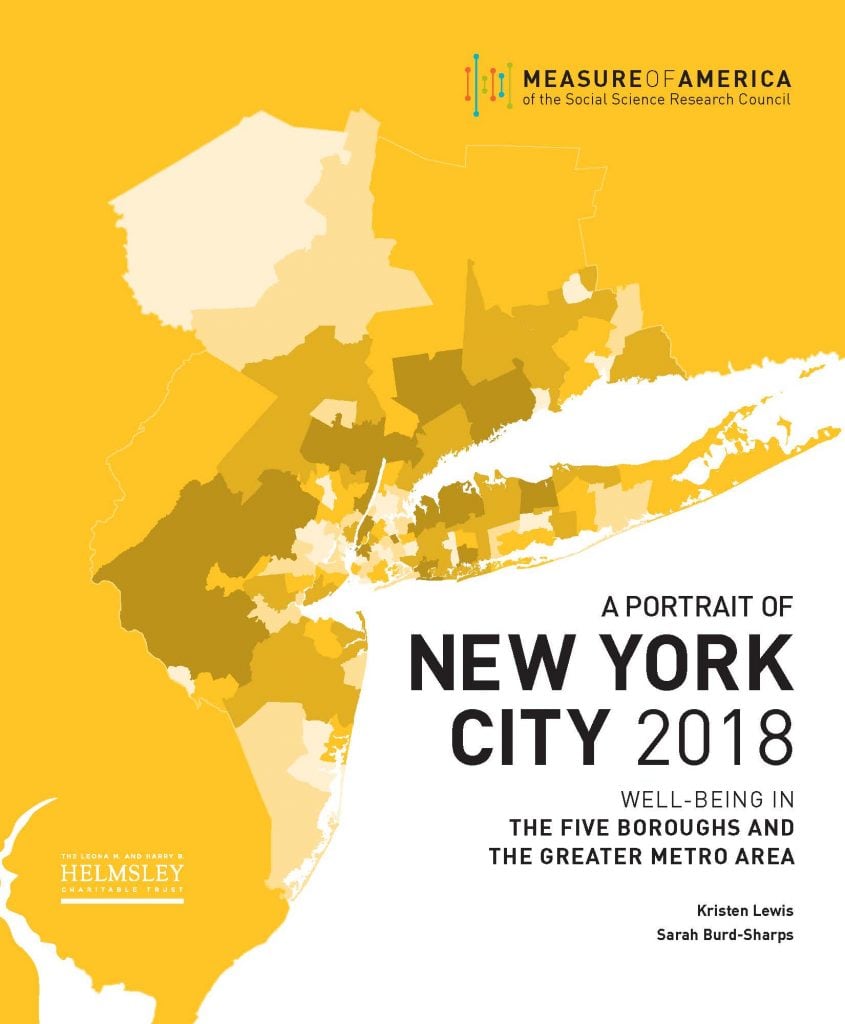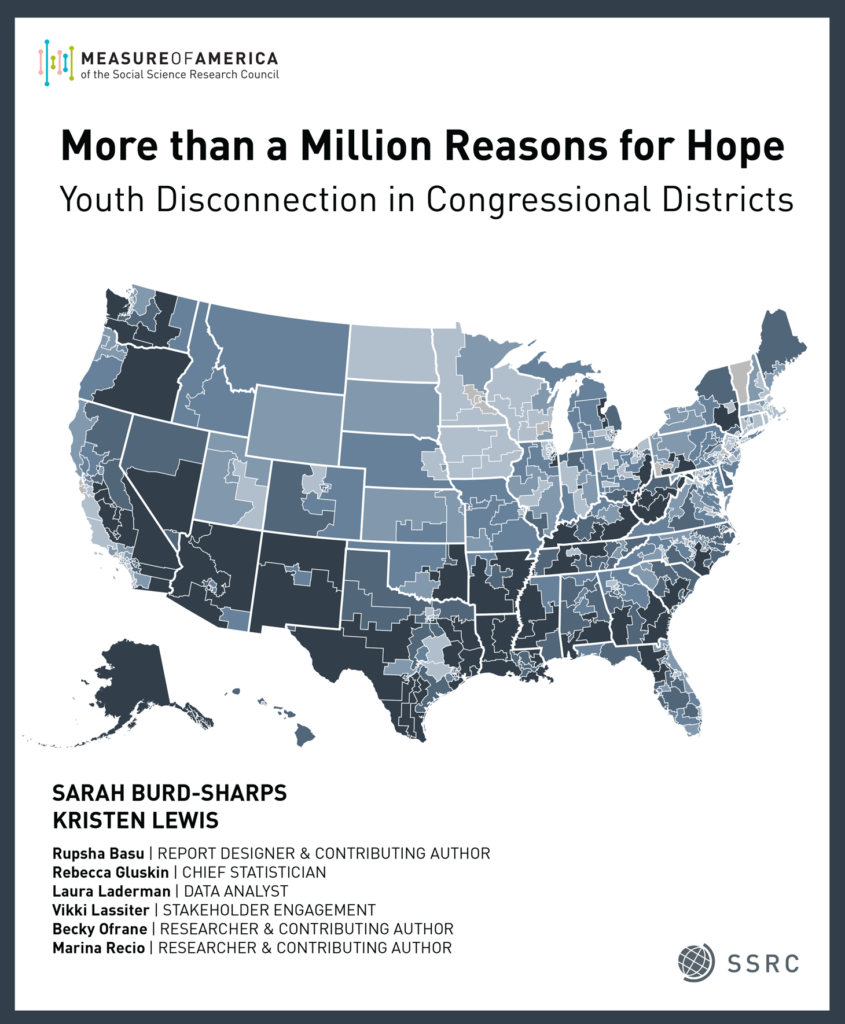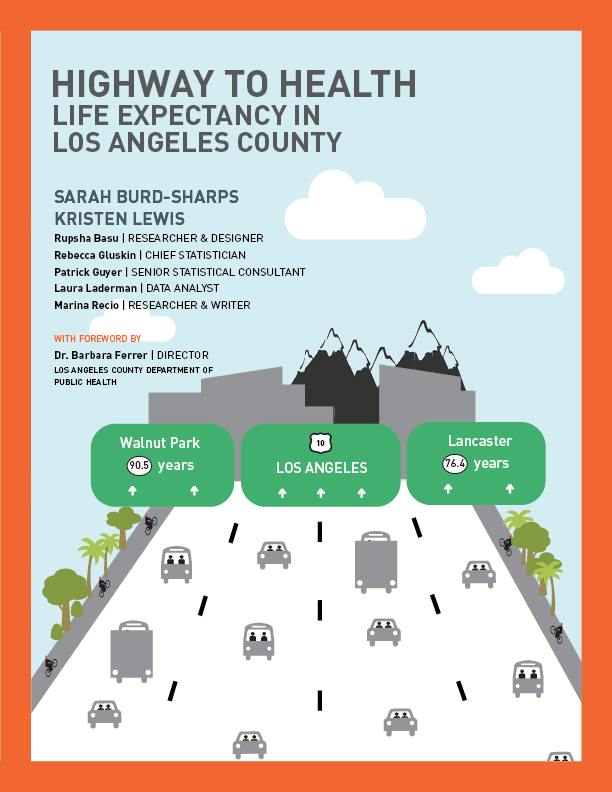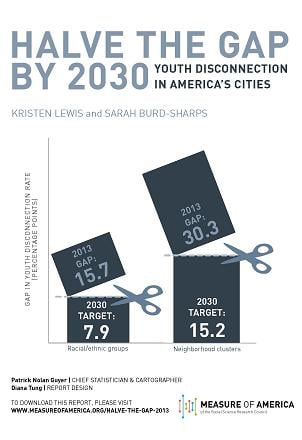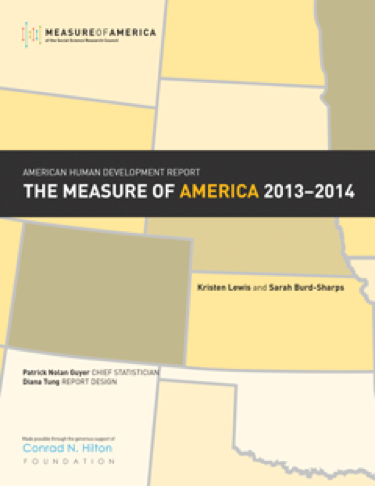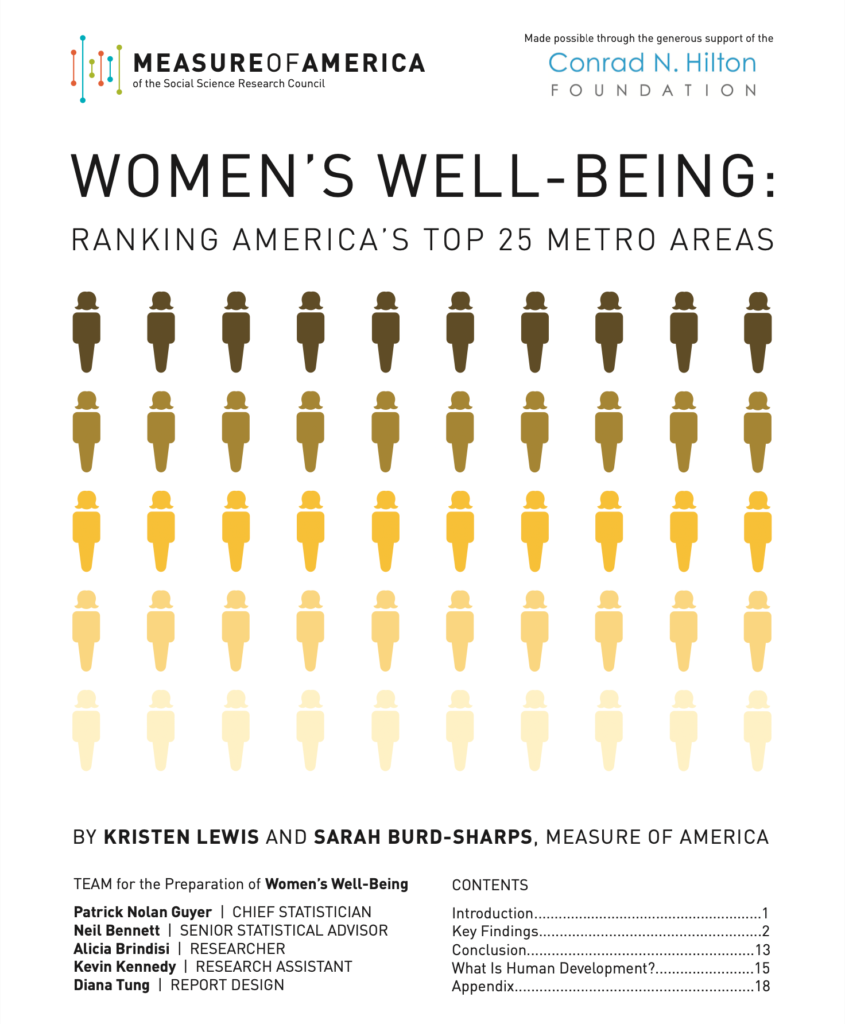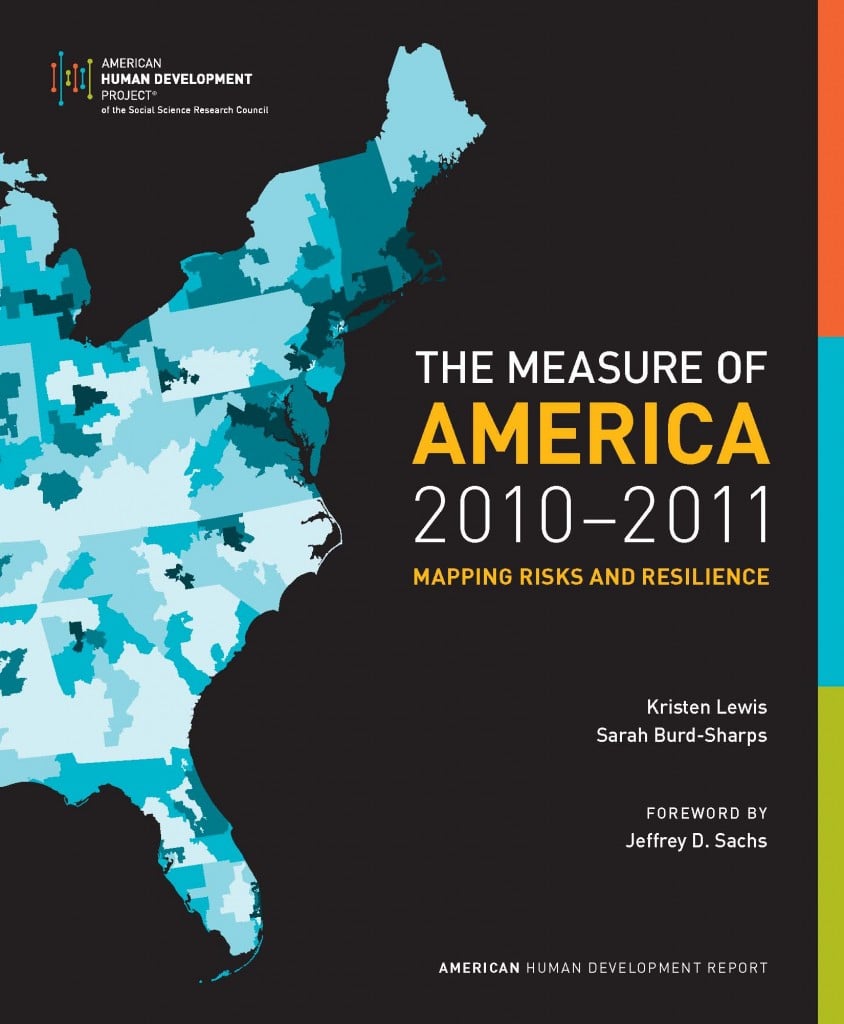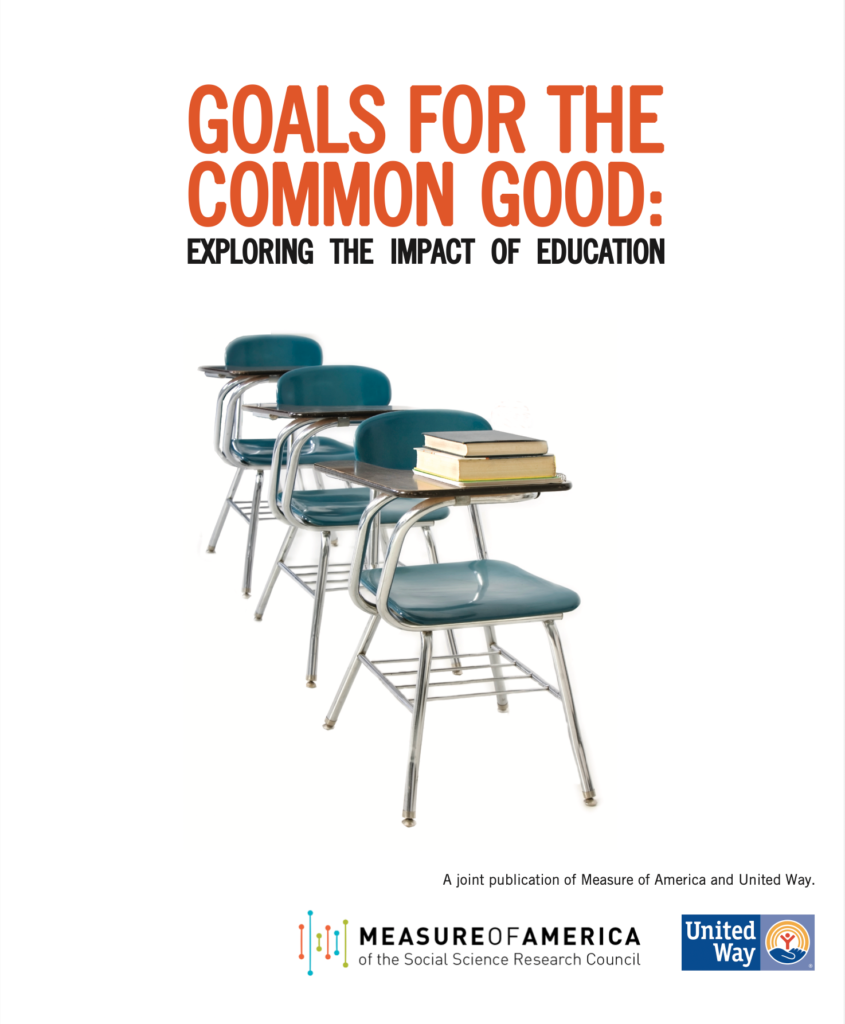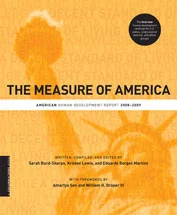Our Work
Building Bright Futures in Greater Houston
Report | December 1, 2025Building Bright Futures in Greater Houston focuses on youth disconnection across 13 counties: Austin, Brazoria, Chambers, Colorado, Fort Bend, Galveston, Harris, Liberty, Matagorda, Montgomery, Walker, Waller, and Wharton.
Broad Recovery, Persistent Inequity: Youth Disconnection in America
Report | October 31, 2024Broad Recovery, Persistent Inequity presents 2022 youth disconnection rates for the United States as a whole as well as by gender, race and ethnicity, region, state, metro area, and congressional district.
A Portrait of Newark
Report | April 24, 2024A Portrait of Newark is an extensive study of well-being across race, place, and gender, and youth disconnection across Newark, New Jersey.
Ensuring an Equitable Recovery: Addressing Covid-19’s Impact on Education
Report | October 3, 2023Ensuring an Equitable Recovery presents 2021 youth disconnection rates for the United States as a whole as well as by gender, race and ethnicity, region, state, metro area, and congressional district.
Building Bright Futures for Youth in Los Angeles
Report | November 17, 2022Building Bright Futures for Youth in Los Angeles: Spotlight on Young Women provides an in-depth look at youth disconnection in Los Angeles County. The report also has a special focus on young women.
Building Bright Futures for Youth in New Orleans
Report | 2022/11/17Building Bright Futures for Youth in New Orleans: Spotlight on Young Women provides an in-depth look at youth disconnection in Greater New Orleans (the New Orleans metropolitan area). The report also has a special focus on young women.
Making the Connection
Report | April 25, 2019This report presents the latest available data on youth disconnection for the United States as a whole as well as by gender, race and ethnicity, region, state, and metro area. It also examines a key factor preventing young people from staying in school and the workforce: disparities in access to reliable and affordable transportation.
Measuring America: 10 Years and Counting
Report | December 14, 2018“Measuring America: 10 Years and Counting” explores trends in American Human Development Index scores over the past decade by race and ethnicity, gender, and U.S. state, revealing the uneven nature of America’s rebound from the 2007 financial crisis.
Two Futures: The Economic Case for Keeping Youth on Track
Report | October 9, 2018Building on Measure of America’s Disconnected Youth Series, Two Futures: The Economic Case for Keeping Youth on Track finds that by the time they reach their thirties, those who had been working or in school as teens and young adults earn $31,000 more per year.
A Portrait of New York City 2018
Report | June 21, 2018A Portrait of New York City 2018: Well-Being in the Five Boroughs and the Greater Metro Area examines well-being and access to opportunity for different geographies and demographic groups in New York City and the greater New York–New Jersey–Connecticut metropolitan area using the human development framework and index.
More Than a Million Reasons for Hope
Report | March 19, 2018This report analyzes youth disconnection in the United States by state, metro area, county, and community type, and by gender, race, and ethnicity. It is the first in Measure of America’s disconnected youth series to compare American and European metro areas or to examine disconnection by group characteristics.
A Portrait of Los Angeles County
Report | November 29, 2017A Portrait of Los Angeles County is an exploration of how LA County residents are faring in terms of well-being and equity.
Highway to Health
Report | October 4, 2017Highway to Health: Life Expectancy in Los Angeles County reveals up-to-date life expectancy calculations for cities and unincorporated areas within Los Angeles County, the first release of such data in more than a decade.
Zeroing In on Place and Race
Report | June 10, 2015Zeroing In on Place and Race is an in-depth look at how disconnected youth are faring in America's cities, with data included on disconnected youth by state, congressional district, county, gender, and by race and ethnicity.
Geographies of Opportunity
Report | April 22, 2015Geographies of Opportunity: Ranking Well-Being by Congressional District is an in-depth look at how residents of America's 436 congressional districts are faring in three fundamental areas of life: health, access to knowledge, and living standards.
HALVE THE GAP BY 2030: Youth Disconnection in America’s Cities
Report | October 24, 2013In this report we imagine, in very specific terms, a different, better tomorrow. We lay out an ambitious but attainable goal: to halve the gaps between the most- and least-connected neighborhoods and between racial groups in half by 2030.
The Measure of America 2013–2014
Report | June 19, 2013This third volume in the Measure of America series measures well-being in three vital areas—health, education, and earnings—that shape the opportunities available to us and enable people to invest in their families and live to their full potential.
One in Seven
Report | September 13, 2012An astonishing one in every seven Americans ages 16 to 24 is neither working nor in school—5.8 million young people in all. This brief ranks the country’s 25 largest metropolitan areas as well as the nation’s largest racial and ethnic groups in terms of youth disconnection.
Women’s Well-Being: Ranking America’s Top 25 Metro Areas
Report | April 25, 2012This analysis shows that the well-being of women living in metropolitan America varies tremendously by place as well as by race, ethnicity, age, and martial status.
The Measure of America 2010-2011: Mapping Risks and Resilience
Report | November 10, 2010The book contains American Human Development Index ranking for all 50 states, 435 congressional districts, major metropolitan areas, racial and ethnic groups, as well as men and women.
Goals for the Common Good
Report | May 13, 2009This report is a companion piece to the online Common Good Forecaster,™ a joint product of United Way and Measure of America. It takes a closer look at the ten indicators featured on the Forecaster and makes the case for why education matters to each of these critical areas.
The Measure of America 2008–2009
Report | July 2008The Measure of America is the first-ever human development report for a wealthy, developed nation. It introduces the American Human Development Index, which provides a single measure of well-being for all Americans, disaggregated by state and congressional district, as well as by gender, race, and ethnicity.


